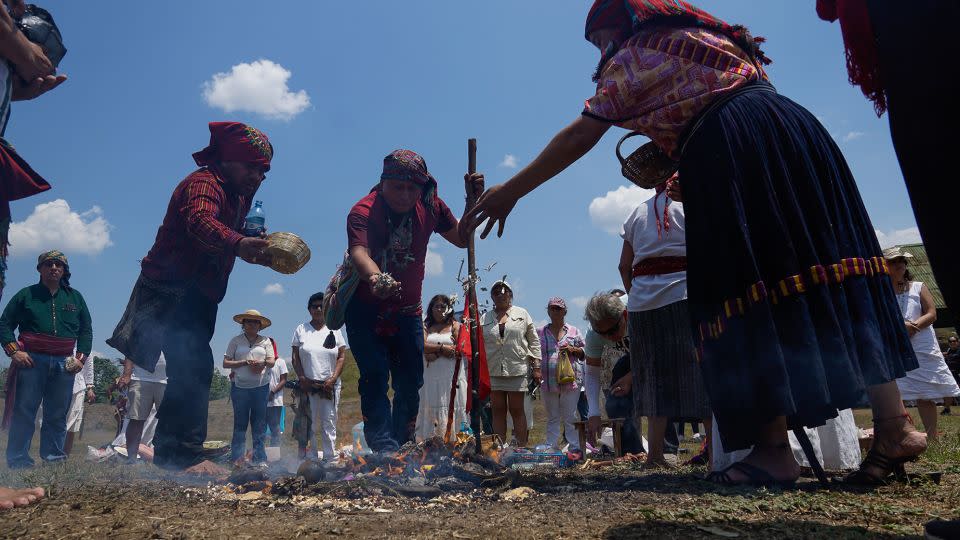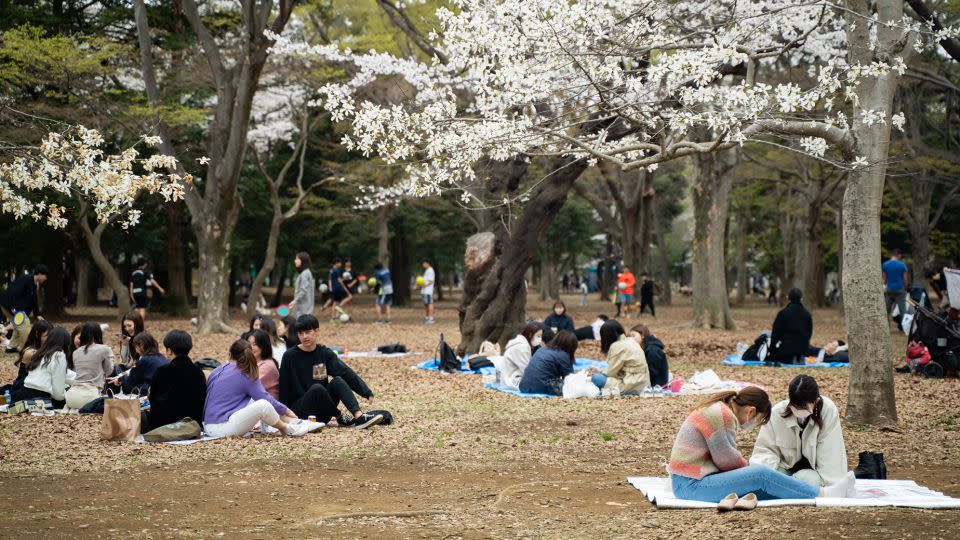For those of us who approach things according to the Goldillocks principle (not too little, not too much), the spring equipment is practically perfect.
Together with the autumn equinox, we get this wonderful balance between day and night all over the world – from steaming equator to the calids Poland – each with about 12 hours. Nobody goes through the extreme, as you can see with the winter solstice or the summer solstice.
Exactly when will the feather equinoses pass?
In 2025, the spring equinox will arrive on Thursday, March 20th, exactly at 9:01 UTC (coordinated Universal Time). So UTC translates your time.
Click here to look at the exact moment of spring equipment in which you are in.
For some, autumn is in the air
This Equinox means that autumn comes in the southern hemisphere. This is an evening air view of the Tokara Wine area under the Drakenstein -Bergen in Stellenbosch, South Africa. – David Silverman/Getty Images
People in the northern hemisphere look forward to long days, perfumable flowers and a green loss. But for people who live south of the equator, this equinocium means that they go to autumn.
For Chileans, South Africans and Australians, this is a time to use cooler autumn weather.
For people who live near the equator in places such as Quito, Ecuador or Singapore, none of this is really a big deal. You have about 12 hours of daylight and night all year round.
Spring Equinox has a different name
If you ever hear someone say “Vernal Equinox”, this means the same thing.
The term Equinox comes from the Latin word “Equinoxium”, which means “equality between day and night”. And vernal also comes from the Latin and means “spring”.
Why does the spring equipment take care?

The indigenous people in Salvadoran deliver offer offering offering offered at the archaeological site of San Andrés in the Zapotitán valley of El Salvador during the celebration of the spring equinox in 2023. – Alex Pena/Anadolu Agency/Getty Images
The earth rotates along an imaginary line that runs from the North Pole to the South Pole. It is called the axis and this rotation gives us day and night.
However, the axis leans at 23.5 degrees, as NASA explains. This positions a hemisphere of the planet to get more sunlight than the other for half of the year for the sun. This discrepancy in sunlight triggers the seasons.
The effect is maximum at the end of June and at the end of December. These are the solstice and they have the most extreme differences between day and night, especially near the poles. (Therefore, every day in winter it stays in places such as Scandinavia and Alaska for so long.)
But since the winter solstice three months ago in December, they have probably noticed that our days in the northern hemisphere have gotten longer and that the nights are shorter. And now we’re here in the spring sequinx!
In the future, the northern hemisphere of the sun will be more exposed to the southern hemisphere. Therefore, it is getting warmer when we go to the summer solstice in June.
The equinocists are not exactly “the same”
Bonus time! It turns out that they get a little daylight than the darkness on the equinocio – and how much does it depend on where they are on the planet.
How does that happen when it is 12 hours and 12 hours of night?
As the US National Weather Service explains, the “almost” same hours and night are the complex way in which a sunrise is measured, and the refraction of the sunlight in our atmosphere.
This bend of light rays “makes the sun appear above the horizon when the actual position of the sun is below the horizon.” The day is a little longer in higher widths than in the equator, as the sun takes longer to get closer to the poles.
We got this really the same day/night split a few days before the official spring equinox. This is called the balance.
Special websites and celebrations

People surround the Kukulkan pyramid at the archaeological site of Maya in Chichén Itzá in the state of Yucatan, Mexico, during the celebration of the spring equinox in 2023. – Hugo Borges/AFP/Getty Images
People had a love affair with spring and all heavenly things.
In Mexico, the Maya location Chichén Itzá has special equinoctities. At this point, the impressive pyramid, which is known as El Castillo, was aligned in such a way that a shadow that surrounds the shape of a light queue (Kukulcán) relegates the steps on the equinoctians.
In England, the mysterious stone structure of Stonehenge has been a popular meeting place for solstice and equinoctities for ages. The English legacy is currently organizing the events.
On the Mediterranean island of Malta, an old megalithic temple in the Mnajdra complex is aligned so that the rays of the morning sun of the spring and autumn equinox seem directly through the main entrance.
Cultures around the world celebrate the equinocio. Here are some:

Visitors enjoy picnicspreads on the Spring Equinox 2023 in the Yoyogi Park in Tokyo. – Zhang Xiaoyu/Xinhua news agency/Getty Images
In Japan, the Vernal Equinox Day is a holiday. Many people still adhere to old traditions such as visiting family graves and keeping family members to mark the spring equipment.
Nowruz is the Persian New Year. It also means “new day” as Nauryz, Navruz or Nowrouz.
It is no coincidence that it falls on the first day of the spring. The Iranian calendar is a solar calendar, which means that the time is determined by astronomical observations by the movement of the earth around the sun. The first day of the year always begins with the Vernal -Equinocto.
It is a celebration of new beginnings: want prosperity and welcome the future while you leave out the past. That is why families use this time to deeply clean their houses and cupboards and buy fresh clothing.
In China, according to Visitbeijing.com, it is a popular game during the spring equinoxe in spring sequinx. It is believed that the custom decreases thousands of years, and it is assumed that if they can bring an egg to a stand, people are lucky. And people all over China eat local spring vegetables.
More CNN messages and newsletter create an account at CNN.com


